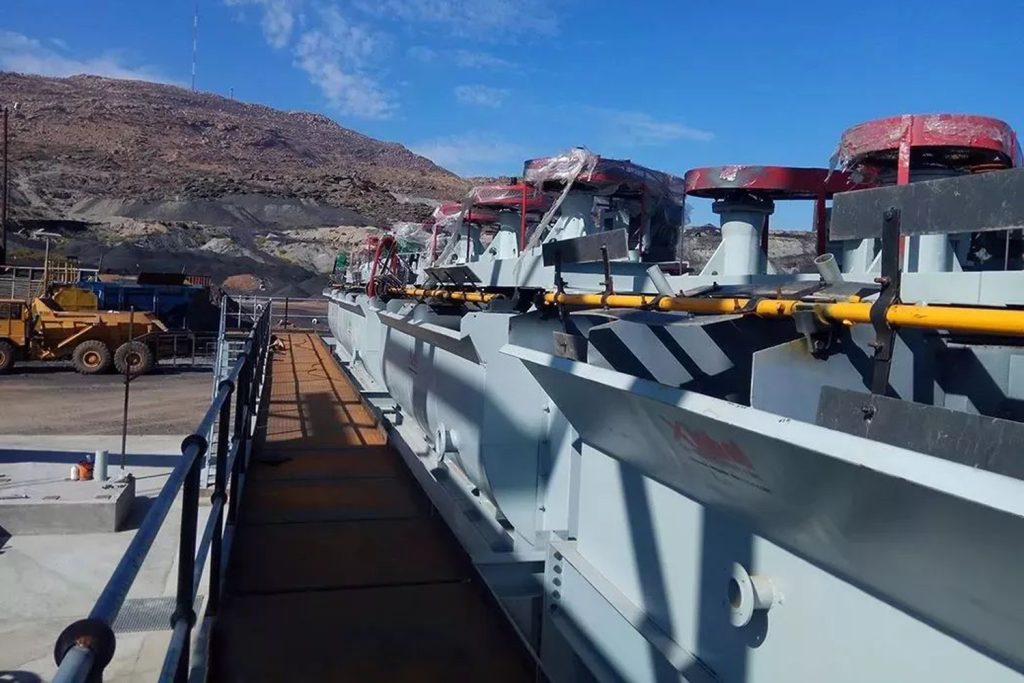Manganese is an essential metal that plays a crucial role in various industrial applications. It is widely used in the production of steel, batteries, ceramics, and other alloys.
However, most manganese ores contain impurities that need to be removed to meet the stringent quality requirements for these applications. This process of removing impurities is known as mineral processing.
Physical Mineral Processing Methods
Physical mineral processing methods are based on the differences in physical properties between manganese minerals and associated gangue materials. These methods are effective in separating the valuable manganese ore from unwanted impurities.
- Gravity Separation: Gravity separation is one of the oldest and simplest methods used to beneficiate manganese ores. It relies on the density difference between manganese minerals and gangue materials. In this process, the ore is fed onto a vibrating table or a sluice, and water is used to wash away the lighter gangue particles while the heavier manganese minerals settle at the bottom.
- Magnetic Separation: Magnetic separation is employed when the manganese ore is associated with magnetic impurities. In this method, high-intensity magnetic separators are used to separate the magnetic minerals from the non-magnetic ones, effectively concentrating the manganese ore.

Chemical Mineral Processing Methods
Chemical mineral processing methods involve the use of chemical reagents to selectively separate manganese minerals from gangue materials.
Flotation: Flotation is a widely used chemical method for separating minerals based on their surface properties. In the case of manganese ores, collectors are used to enhance the hydrophobicity of manganese minerals while depressing gangue minerals. Air bubbles are then introduced into the system, and the hydrophobic manganese particles attach to these bubbles, rising to the surface for collection.
Hydrometallurgical Mineral Processing
Hydrometallurgical mineral processing methods involve the use of aqueous solutions to extract manganese from its ore.
Leaching: Leaching is a process that utilizes chemical solvents to dissolve the desired metals from the ore. In the case of manganese, various leaching agents such as sulfuric acid or ammonium carbonate can be used to selectively dissolve manganese minerals, leaving behind the gangue materials.
Comparison of Mineral Processing Methods
| Method | Advantages | Disadvantages |
|---|---|---|
| Gravity Separation | – Simple operation | – Lower efficiency for fine particles |
| – Low operating cost | – Limited to certain ore types | |
| Magnetic Separation | – Effective for magnetic impurities | – Limited applicability to non-magnetic |
| – High separation efficiency | manganese minerals | |
| Flotation | – Versatile method for various minerals | – High reagent consumption |
| – Suitable for fine particles | – Complexity in controlling conditions | |
| Leaching | – Effective for low-grade ores | – Environmental concerns with reagents |
| – Selective dissolution of manganese | – Long processing time |
Conclusion
In conclusion, the mineral processing of manganese minerals is a complex process that aims to improve the quality of the ore by removing impurities. Physical, chemical, and hydrometallurgical methods offer effective ways to separate manganese minerals from gangue materials. Each method has its advantages and disadvantages, and the choice of the appropriate method depends on the specific characteristics of the manganese ore.
The development of innovative and sustainable mineral processing methods is crucial to meet the increasing demand for high-quality manganese in various industries. Continuous research and technological advancements will undoubtedly pave the way for more efficient and environmentally friendly mineral processing in the future.